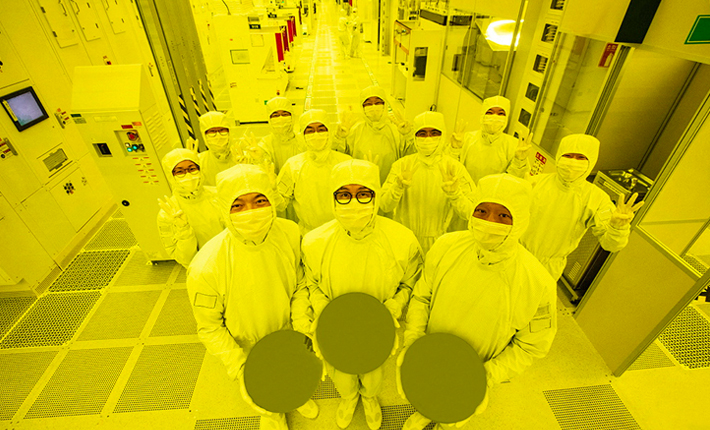Huawei’s latest smartphone has sparked considerable interest at home and abroad because of concern the Chinese tech giant has created an advanced chip with 5G capabilities similar to top models such as Apple, despite US efforts to hinder such progress.
The Mate 60 Pro, which was launched last week, while US Commerce Secretary Gina Raimondo was on a high-profile visit to discuss bilateral business ties, prompting state media to hail the US trade curbs as a failure.
Huawei has disclosed few details about the phone, aside from saying it had made breakthroughs in satellite communications, but CGTN said the phone has a new Kirin chip made by Semiconductor Manufacturing International Corp (SMIC), a chipmaker partly owned by the state.
There is still debate on whether it uses a second-generation 7-nanometre chip, or a 5-nanometre chip, but either way, it appears to be a breakthrough, and the ramifications from that could be significant – indeed, analysts are already saying it could spur calls for a tightening of US export controls.
ALSO SEE: China Facing Reality Check After Long Boom Built on Debt
Even if Huawei’s new phone is not as good as top-of-the-line Western models, it has “major geopolitical significance”, one technology expert in Washington has said.
“This development will almost certainly prompt much stronger calls for further tightening of export control licensing for US suppliers of Huawei, who continue to be able to ship commodity semiconductors that are not used for 5G applications,” Paul Triolo, a technology analyst at business consulting firm Albright Stonebridge Group, told the Washington Post.
Chip experts say SMIC is still years behind TSMC, the world’s leading chipmaker, in terms of capabilities and it’s not clear if the Chinese chipmaker can produce advanced chips at a competitive cost and scale.
The new Kirin chip is manufactured by #Chinese #semiconductor company #SMIC. It is Huawei’s first higher-end Kirin processor since 2020 after the U.S. government restricted American businesses from selling their products or services to #Huawei. #China #USsanctions #semiconductor https://t.co/uqE5wXEaow
— CGTN (@CGTNOfficial) August 29, 2023
Indeed, a technical expert writing for TomsHardware.com site said SMIC “may have developed a 5nm-class fabrication process”, but he said they probably had to use an “expensive technology” to get around US sanctions.
“To print outstanding features on a 5nm-class node or a refined 7nm-class process technology, SMIC has to heavily use multi-patterning, which is an expensive technology that affects yields and costs, so the economic efficiency of SMIC’s 5nm-class technology is likely considerably lower than that of market leaders Intel, TSMC, and Samsung Foundry,” writer Anton Shilov said.
China ‘using mature chips’ to get around US sanctions
Meanwhile, the news comes amid fresh claims that US chip sanctions may not be enough to deter China’s military ambitions.
A Stanford graduate revealed last week that engineers at Tsinghua, China’s top technology university, have indicated that export controls imposed by the US last October “may not fully accomplish Washington’s objectives and that the sanctions’ scope should expand”.
“Conversations with over 60 engineers on Tsinghua’s campus reveal the prevalence of continuous EDA (electronic design automation) software limitation workarounds and the downsides of only targeting the most advanced-node chips, as opposed to so-called ‘mature node’ chips that offer less density of processing power for a given physical size,” Christina Knight said in a report for the East Asia Forum.
“Several students at the School of Integrated Circuits at Tsinghua (a ‘chip college’ established in 2020 to foster China’s top semiconductor talent) noted that they can easily circumvent EDA restrictions,” she said, adding that “most military technology relies on less sophisticated chips” that are 28nm and above.
Knight argues that Washington’s export controls actually “stimulated Beijing’s mature chip industry”, because it “increases China’s ability to dominate the global mature node market”.
She quoted a Chinese PhD student as saying “right now, we are more focussed on the applications that need chips 28nm and above like missiles, space and jets,” adding that “a 2022 RAND report confirms that military technology development — such as space technology, radio frequency communication, laser-based sensing, edge computing, and integrated silicon photonics — mostly relies on mature chips.”
This is not the first time, such reports have emerged.
But whether the Biden administration is prepared to follow this advice and enforce tougher export curbs on China may depend on developments in the South China Sea and Taiwan, as well as the lobbying capacity of US and Taiwanese chipmakers.
Stay tuned. The ‘chip war’ appears far from over.
- Jim Pollard
ALSO SEE:
China ‘Strongly Dissatisfied’ at US Ban on Tech Investment
Chinese Tech Giants Rush to Buy Nvidia’s Top AI Chips – FT
Dutch Restrict Chip Exports Amid US Push to Tighten China Curbs
Banned Nvidia Chips Available in China’s Underground Markets
US Chip Sanctions Have Hardly Impacted China’s AI Capability
US Backers Like Intel, Qualcomm ‘Poured Billions’ Into China AI
ASML, Lam See Strong China Demand for Less Advanced Chips
























